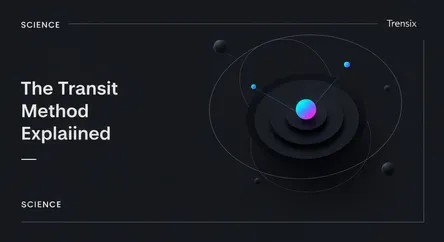Science
The Transit Method Explained

Discover the transit method, the leading technique for finding distant planets (exoplanets) by observing a star's dimming light as a planet passes by.
What is it?
The transit method is a key technique for finding exoplanets, which are planets outside our solar system. It involves monitoring a star for tiny, periodic dips in its brightness. These dips occur when an orbiting planet passes in front of the star from our perspective, blocking a small amount of its light. This event is a "transit." The pattern of these transits reveals the planet's presence, its size, and its orbital period (the length of its year).
Why is it trending?
The transit method is trending because it's incredibly effective. Space missions like NASA's Kepler telescope and the Transiting Exoplanet Survey Satellite (TESS) have used it to discover thousands of exoplanets, more than any other technique. It is particularly adept at finding smaller, rocky planets, including those in a star's "habitable zone" where liquid water could exist. The continuous stream of discoveries from TESS keeps the method at the forefront of astronomical news.
How does it affect people?
This method reshapes our cosmic perspective by showing that planets are extremely common throughout the galaxy. It transforms the abstract question of "Are we alone?" into a tangible scientific pursuit, fueling public imagination and driving technological advancement. Discoveries inspire powerful new observatories, like the James Webb Space Telescope, which can analyze the atmospheres of these distant worlds for potential signs of life, bringing us closer to answering one of humanity's greatest questions.